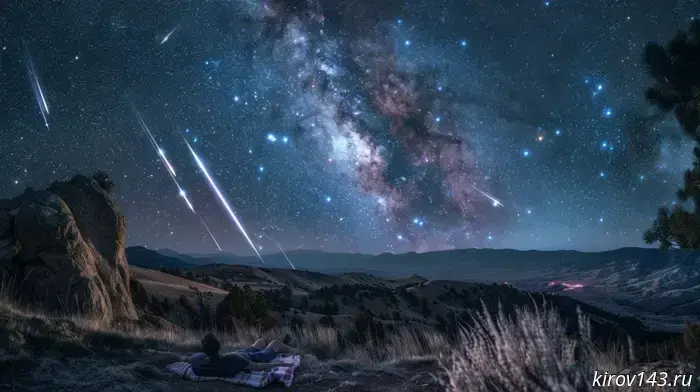
The peak of the Orionid meteor shower: space is preparing a show for Earthlings
When and where to watch
The stream’s radiant (the area where meteors appear to originate) is in the constellation Orion. “Find a spot away from city lights, take a blanket or a deck chair. Lie on your back and look up, trying to take in as much of the sky as possible. Your eyes will need about 30 minutes to fully adapt to the dark, after which you will begin to see meteors,” the portal 56orb.ru quotes the recommendations of Bill Cook, head of NASA’s Meteoroid Environment Office.
What the Orionids are
Origin: Particles from the famous Halley’s Comet
Duration: Active from October 2 to November 7
Intensity: At peak, up to 20–25 meteors per hour can be observed
Characteristic: The Orionid meteors are known for their high speed (up to 66 km/s) and often leave long, bright trails in the sky that can shimmer in different hues.
A double astronomical bonus
On this night astronomy enthusiasts will have the rare opportunity to see two comets at the same time as the meteor stream — C/2025 A6 Lemmon and C/2025 R2 SWAN — which will be at their closest approach to Earth. Under favorable conditions and with the aid of binoculars, their gas-and-dust tails may be visible.
Experts emphasize that no special equipment is required to observe this celestial display — just a clear sky, patience, and the desire to make a wish on a “shooting star.”
Другие Новости Кирова (НЗК)
 Geminis shouldn't throw money around, and a power will awaken in Scorpios.
Astrologers revealed what the middle of the current workweek will be like for all zodiac signs.
Alien ship or cosmic 'soda'?
The mysterious comet 3I/ATLAS is streaking through the Solar System, baffling scientists.
Geminis shouldn't throw money around, and a power will awaken in Scorpios.
Astrologers revealed what the middle of the current workweek will be like for all zodiac signs.
Alien ship or cosmic 'soda'?
The mysterious comet 3I/ATLAS is streaking through the Solar System, baffling scientists.
-may-for-the-second-time-file-for-personal-bankruptcy.jpg) The State Duma approved a large-scale adjustment to the federal budget for 2025, deliberately increasing the deficit to finance key government programs. Against the backdrop of a 1.9 trillion ruble drop in revenues, spending is being maintained at the planned level, which will lead to the deficit rising from 1.7% to 2.6% of GDP.
The State Duma approved a large-scale adjustment to the federal budget for 2025, deliberately increasing the deficit to finance key government programs. Against the backdrop of a 1.9 trillion ruble drop in revenues, spending is being maintained at the planned level, which will lead to the deficit rising from 1.7% to 2.6% of GDP.
 A resident of Yurya owes the children more than a million rubles.
In Yuryansky District, the court handed down a sentence to a 33-year-old local resident who had systematically evaded paying child support for his two minor sons.
A resident of Yurya owes the children more than a million rubles.
In Yuryansky District, the court handed down a sentence to a 33-year-old local resident who had systematically evaded paying child support for his two minor sons.
 Is Yuri Kintsler's insolvent company ready for a second bankruptcy?
Elena Urvantseva, a Kirov resident and the first bankruptcy trustee of CJSC Trust "Yamalstroygazdobycha" (YSGD), may for the second time file for personal bankruptcy.
Is Yuri Kintsler's insolvent company ready for a second bankruptcy?
Elena Urvantseva, a Kirov resident and the first bankruptcy trustee of CJSC Trust "Yamalstroygazdobycha" (YSGD), may for the second time file for personal bankruptcy.
 The capital repair fund suddenly "reduced" its debts threefold.
The Legislative Assembly committee has yet to obtain a clear answer as to why the figures changed so sharply.
The capital repair fund suddenly "reduced" its debts threefold.
The Legislative Assembly committee has yet to obtain a clear answer as to why the figures changed so sharply.
The peak of the Orionid meteor shower: space is preparing a show for Earthlings
From October 21 to 24, residents of the Northern Hemisphere will be able to observe one of the most spectacular meteor showers of the year — the Orionids. Astronomers note that this year unique observing conditions have come together: the shower's peak coincides with the new moon, providing an especially dark sky and excellent visibility even for the faintest meteors.
